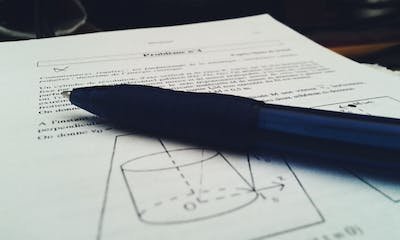Understanding Newton's Laws of Motion: A Fundamental Guide
How time flies and how we live on memories is most of the time on things we are aware of and things we are not yet aware of. Most of the time when you remember what you have been taught years ago and the knowledge you have acquired many years later in that same topic, you will be wishing how it should have been possible earlier.
Many years back, I had various favourite subjects I consider in school ranging from biology, chemistry and physics. Well even though I am currently studying civil and environmental engineering now, I wasn't a fan of mathematics before. I have always been a big fan of physics and even now, some various topics in physics I wouldn't be tired reading anytime. Some of them include force, waves, motions and many more.
Today I would like to talk about motion and to share with us the knowledge therein. Issac Newton did a great job establishing the foundation and knowledge in motion which many of us are building on which even scientists are using to come up with great projects. Isaac Newton's three laws of motion are fundamental principles that govern the behaviour of objects in the physical world. Even now, this there laws of motion are still relevant and constant. And shortly we will be looking at it together.
The Three Laws of Motion
(1). The Law of Inertia

The Law of Inertia states that an object at rest tends to stay at rest, and an object in motion tends to stay in motion with the same speed and in the same direction unless acted upon by an unbalanced external force.
This law is often referred to as the law of inertia and it happens to be one of the most common laws in physics. If you are a physics student, you will understand what I mean. It means that objects tend to resist any change in their state of motion. For example, a book sitting on a table will stay there unless you apply a force to move it. Likewise, a moving car will keep moving in the same direction unless friction or another force stops it.
(2). The Law of Force and Acceleration
The Law of Force and Acceleration states that the acceleration of an object is directly proportional to the net force acting on it and inversely proportional to its mass.
This law is often referred to as the law of acceleration. It means that the more force you apply to an object, the greater its acceleration will be. However, the more massive the object, the less it will accelerate for a given force.
For example, if you push a toy car with a force of 10 N, it will accelerate more than if you push a truck with the same force of 10 N. This is because the truck has more mass than the toy car.
(3). The Law of Action and Reaction
The Law of Action and Reaction states that for every action, there is an equal and opposite reaction. This law is often referred to as the law of reaction. It means that when one object exerts a force on another object, the second object exerts an equal and opposite force on the first object.

For example, when you jump, you exert a force on the ground. The ground then exerts an equal and opposite force on you, which propels you into the air.
These three laws of motion are fundamental principles that have shaped our understanding of the physical world. They are used in many different fields, such as engineering, physics, and sports.
As I was saying earlier, so many things have been established due to the laws of motion which even now is still in motion. In every of our day, we make use of the three laws of motion. Some we are aware of and some we are not aware of but in every of our day, we constantly make use of the laws of motion here are some specific examples of how Newton's Laws of Motion are used in everyday life:
- Car safety: Seatbelts and airbags are designed to keep passengers safe in the event of a car crash. Seatbelts work by using Newton's First Law to keep passengers from continuing to move forward when the car stops suddenly. Airbags work by using Newton's Second Law to slow down the passengers' acceleration.
- Sports: Newton's Laws of Motion are used in many sports, such as baseball, football, and basketball. For example, when a batter hits a baseball, the ball's acceleration is determined by the force of the bat and the mass of the ball.
As I conclude, Newton's Laws of Motion are used in the design of many vehicles, such as cars, aeroplanes, and rockets. For example, the design of an aeroplane's wings takes into account the force of lift, which is generated by the difference in air pressure above and below the wings.
These are just a few examples of how Newton's Laws of Motion are used in everyday life. These laws are essential for understanding the physical world and for designing and engineering many of the technologies that we rely on.
Thanks for your contribution to the STEMsocial community. Feel free to join us on discord to get to know the rest of us!
Please consider delegating to the @stemsocial account (85% of the curation rewards are returned).
Thanks for including @stemsocial as a beneficiary, which gives you stronger support.